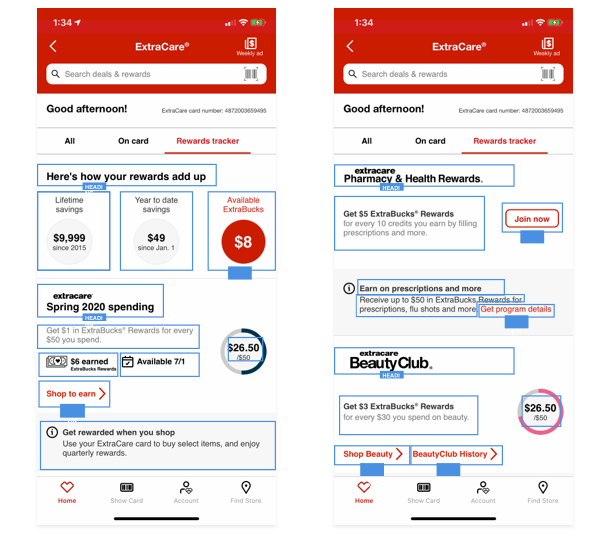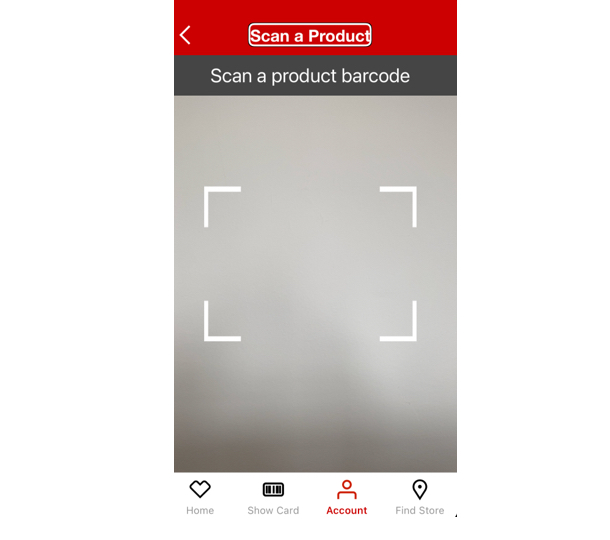CVS App Accessibility
Team: Project manager, product owner, development team, UX/UI designer
Role: Accessibility Subject Matter Expert
Timeline: 1-2 months, Winter 2020
Scale: Millions of users
Technology: iOS, Android, WCAG 2.1
Problem: The Extracare section of the iOS and Android apps, which one of my teams was focused on, underwent a major redesign over the course of a few quarters. New features as well as UI updates were being implemented in an Agile fashion, so accessibility issues needed to be captured across engineering, design, and business at the same time.
Process
- Worked with design to create usable, delightful, and accessible-to-all heading structure, input design, graphic compliance, color compliance, data visualizations, and interactive features like camera based barcode scanner, feature-rich search interface, and extensive dynamic elements based on user loyalty and coupon configuations.
- Crafted custom accessibility copy for screenreader users to guide them through the interface in an easy, delightful, and understandable way. Wrote accessibility copy for each platform seperately to account for nuances in iOS Voiceover and Android Talkback.
- Had daily calls with engineers to go over accessibility challenges and workshop them together, and ran both smoke tests and full accessibility evaluations of the UX in development environments. Tracked accessibility bugs through the remediation process and closed them.
Outcome: The app was released in compliance with WCAG 2.0 accessibility requirements, and the rate of accessibility-related bugs went down sprint-over-sprint the more we worked together.

